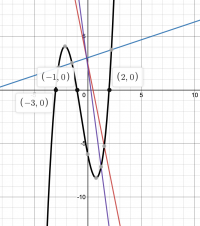mathshelpplease
New member
- Joined
- Oct 5, 2021
- Messages
- 25
(x+3)(x2−4)≤(x2+x−6)
Hello, I'm struggling with this problem. Any idea? I think I may have got my division wrong as I only find one solution where I know there should be more.
Hello, I'm struggling with this problem. Any idea? I think I may have got my division wrong as I only find one solution where I know there should be more.

